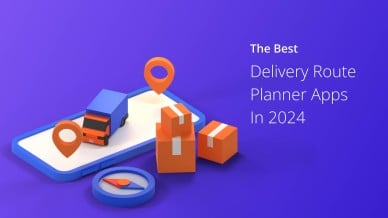Table of Contents
A Founder’s Unique Challenges
There are many reasons you may want start a business. It’s true that necessity is often the mother of invention, but sometimes a short-term opportunity suddenly presents itself that’s too good to pass.
Yet, as founders, we have to adapt to every opportunity’s unique requirements.
Being nimble is important. Businesses need to rapidly determine which tools are necessary to solve a specific set of problems, and then consistently use the most appropriate tools to ensure business survivability. Some problems are easily solvable, while others are complex, high-risk, high-reward projects.
Overcoming difficult obstacles comes with the turf of business ownership. If you want to keep a business alive and growing, you have to drive investments into key areas of a business.
Business investment opportunities are often categorized into three key categories: people, process, or technology.
Depending on the type of business you’re in, risk, complexity, and costs will vary among these categories.
More businesses die from indigestion than starvation
David Packard, of Hewlett-Packard, felt that most problems in most businesses were internal in origin. And in most cases, he was right.
Competitors and government rarely tamper in the seemingly irrelevant affairs of how inefficiently or ineffectively most founders & owners run their businesses.
Your company’s weaknesses (known or unknown) are its biggest competitor and growth inhibitor.
Examples of internal problems range the gamut from annoying to downright felonious.
Let the dark side of your imagination run wild for a moment.
Think about customer service reps who never return customer phone calls, sales people who lie to your customers just to close a deal, or a procurement department that gets kickbacks to pick a specific vendor in a sealed bidding process, it’s all happened before, and it will all happen again.
History as we all know, always repeats itself.
Is it happening in your business? How bad is it and how often does it happen?
Build, Buy, or Rent?
Whether you’re intentionally seeking out short-term monetization opportunities that have strong market tailwinds, or trying to build a national (or international multi-generational legacy business), you need the right tools to accomplish your objectives.
Almost all businesses have to make build versus buy (or rent) decisions.
Most businesses don’t and can’t manufacture their own cars, power tools, or buildings.
These complex tools or services are often purchased from reputable and established companies that specialize in these areas, because it’s obvious that the time and effort to recreate certain things are astronomical or even downright impossible (e.g. independent financial audit firms, attorneys, high-tech equipment).
So what choices are really left?
Buying software is obsolete now. Putting it on some server in a wiring closet is so Pre-Y2K…
Some vendors give it a fancy name and call it “on-premises.”
On-premises routing software solutions are a remnant of legacy software companies who didn’t invest in modernizing into a cloud-based SaaS route optimization solution. Their justification for offline technology is that it’s more secure (false). Or that someone else won’t have access to your data (also false).
Imagining an on-premise routing software platform just seems obscene… It wouldn’t have live traffic routing optimization, or real-time gps navigation… or anything else, that all your business competitors are running.
On-premise routing software is doublespeak for saying: pay for something that becomes obsolete the moment you buy it, be responsible for managing your own hardware, training your own IT people to run it, and paying annual support fees for an occasional software refresh.
After all is said and done, renting is the only remaining viable decision for the majority of businesses.
Blurred Lines: Marketing Salesmanship or something worse?
In the never ending journey of procuring the newest generation of services and tools, companies selling solutions to your problems, often get carried away with how they represent and commercialize their offerings.
Sellers of these technologies or solutions recognize that most business owners are very passionate about, and are experts in, in a very specific part of their own businesses. But most business owners are not knowledgeable enough in the highly detailed and specifically nuanced terminology of proprietary solutions, nor should they be.
Dishonest software salespeople tap-dance the very thin line of fact and fiction. They use buzzwords and keywords they think you want to hear, constantly seeking out those that resonate most with you.
Then they reinforce these perceived “pain points” and synthesize a fictional value created as dollar amount.
More “sophisticated” logistics management consultants will try to draw up a multi-scenario business case with a set of predefined assumptions. They call it a consultative sale.
They’ll even let you change the numbers so you feel like you’re part of the decision making process: how much you pay your drivers per hour, how many miles per gallon your vehicles get, the number of trucks you think you need to service your customers.
And if they’re only half right, you’re still way ahead of the game, right?
They push the boundaries of what and how they promise you- and their capabilities’ boldness will vary based on how much risk their management team is willing to take and how big their legal budget is.
Their contracts and agreements intentionally incorporate very specific terminology to minimally limit their liability.
Sorry, but if something doesn’t work the way you expected it to, it’s your fault for misunderstanding.
So how can business owners be expected to make a buy decision in a complex area in which they are not experts in, say GPS tracking and route planning software for businesses?
A buyer’s guide to route planning software
The bestselling book, The Checklist Manifesto, reveals how a simple checklist can consistently help maintain quality standards across a variety of different themes.
Regarding routing software, we’re very familiar with the types of questions customers ask because we’ve been asked so many great questions by almost countless business owners.
Having helped hundreds of thousands of people purchase routing software or find free route planners throughout the last decade, we’ve boiled down the bare necessities to a concise checklist that we feel would be most beneficial to any business owner needing tools to improve customer satisfaction, driver effectiveness, and long-term business value creation.
We’ve maintained very high customer satisfaction ratings throughout those years and millions of app downloads.
- Capterra: 255+ 4.5 Star Reviews for Route Planning Software
- Google: 11,000+ 4 Star Ratings for our Android Mobile Routing App
- iTunes: 6,000+ 4.5 Star Ratings for our iPhone Mobile Route Planner
- Glassdoor: 40+ 5 Star Reviews. We ask our team members to rate how well we’re doing as a company
Here’s a concise list of challenge questions sure to make your route planning salespeople break into an uncomfortable sweat:
- Business & Culture
- As a company, what are your values and ethics?
- How is this culture differentiated from some of your competitors?
- Who are your most frequently encountered competitors, and why do you often lose opportunities to them?
- Business Risk
- Are you currently being sued or at risk of being sued by any of your customers?
- Does any one customer represent greater than 10% of your company’s revenue?
- Are you actively in discussions to be acquired within the next 24 months?
- Do you really want to spend time getting onto a system that will be shut down soon, or that may experience serious changes to its pricing and business model?
- Are you just a white-labeled reseller of another route planning software company?
- Are you worried that you may be infringing on any granted patents?
- What happens to my service subscription when one of your key vendors shuts down or dramatically increases downstream fees?
- How many months of runway do you have in cash?
- How many paying subscribers do you have?
- If your routing software was so successful, why did you raise money from venture capitalists or private equity firms?
- Service and Support
- What is your most basic level of support?
- Why don’t you have a phone number listed on your website?
- Why are your business hours so narrow?
- Why don’t you have 24/7 chat?
- Subscription Model
- Why are you billing me for route planning services per driver per month?
- Why are you billing me for route planning services per assigned/completed delivery task per month?
- What are my cancellation fees?
- Why is there a contract?
- Why do I have to commit to an annual subscription to get a discount?
- How much of a discount can I get for a case study?
- Isn’t a flat rate cheaper for me?
- Keep your eyes & ears open for excuses about downstream vendor licensing costs (e.g. Google Maps, Mapbox, etc.) Most of these vendors charge a per unit per month rate, utilization is not the largest cost component in a route optimization solution.
- Product and Platform
- Your presentation looks nice, but show us how it works in real time, using my own actual route destination and customer data.
- I want to see how well your system optimizes routes near bridges, tunnels, and bodies of water.
- Can I export 100% of my routing, delivery, and notes data in one click?
- Show us how it will work when my business grows 2x, 5x, 10x, 20x, and 50x. Don’t worry – you can use sample dummy data.
- Show us how your mobile route planning apps work when a driver has no internet connectivity for many hours? I want to see the routes list, routes map, delivery confirmations, and photographs appear inside the cloud platform.
- Show us how the driving distances compare between your estimated travel distance and time versus Google Maps.
- You say you do route optimization with traffic, but do you really?
- Does the sequence of the routes actually change based on anticipated traffic conditions with dynamically changing departure time windows?
- Show us how it works. Let’s simulate routes that start at 7AM, 8AM, 9AM, 10AM, 11AM. We would like to see the sequence of the routes change completely to accommodate forward and reverse traffic conditions.
- Or do you mean that live traffic route optimization in your business simply changes the estimated arrival times, just like Google Maps has already been doing for free for the last ten years?
- Does the sequence of the routes actually change based on anticipated traffic conditions with dynamically changing departure time windows?
- How many app downloads has your app gotten?
- Can you show us a live screenshot inside your Google Play or iTunes console, AppAnnie, or Sensor Tower?
Tell me what I want to hear: High-pressure sales tactics
When your business identifies opportunities to reduce carbon emissions, improve customer satisfaction, and reduce costs, you will likely need to look for a subscription to a software platform that is appropriately priced for the value it is creating for your business.
It’s important that you shop around for an all-in-one, easy-to-use route planning solution with mobile app support.
As you speak with different vendors, they will all try to put a checkbox next to your requirements, so it is particularly important to pay attention to the non-technical aspects of your purchase experience.
- You’re telling me everything I want to hear now, but what happens after I commit to a paid subscription?
- How many free onboarding sessions does my team get?
- Can I get out of my subscription or contract if the features you promised to develop for me aren’t made available and functioning properly in the period you promised?
- How many named / dedicated points of contact am I getting with my subscription?
- Do you have enough staff programmers available to help my IT team integrate? If yes, what’s the hourly rate and minimum commitment?
- You mentioned your routing software is HIPAA compliant, so can my IT team and security experts get a copy of your SOC2/HITECH security policies and actively conduct penetration testing?
Management consultants and expert advisors
Beware expert management consultants and specialists in project managing, solutions architecting, or writing RFI’s on your behalf.
Many of these RFIs are very generic – based on interviews and requirements gathered from your current staff. You’ll likely get current-state behaviors documented into your RFI rather than best-in-class transformative suggestions.
And, if an RFI is written too quickly, you should be wary if it’s written in a way that only a preselected/predetermined vendor could ever win.
Considering that there are globally fewer than three legitimate route planning software companies, how many people on the planet do you believe actually have experience in architecting, programming, and deploying such systems?
Not many.
Unless you’re a Fortune 100 company that uses one of the big five consulting firms, like Accenture, Deloitte, Bain, McKinsey, or Boston Consulting, do you really want to subscribe to a route optimization platform that is so complex that it requires an MBA to produce and use?
Your business, your decision
You got your business to where it is today by following your gut and instincts. It doesn’t matter if you’re purchasing a widget or last-mile optimization technology.
If it doesn’t smell right, don’t buy it – and if picking between two solutions, don’t let money be the only deciding factor.
- Does the solution run on Amazon Web Services (AWS)?
- As a business owner, are you comfortable sending your hard-earned money and data to what is possibly your single greatest competitor?
- How quickly are your phone calls returned?
- How knowledgeable are the certified routing experts?
- Can your employees and team members get support how they want, whenever they want?
- Do you trust the person you’re working with?
- Does it sound like your business’ cultural values align with the founders of the routing company?
- Can the company politely and effectively accommodate your demanding IT team?






